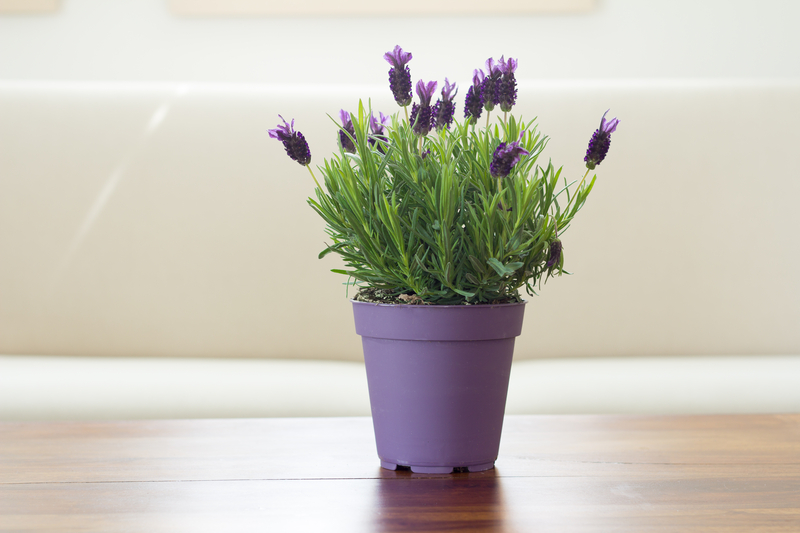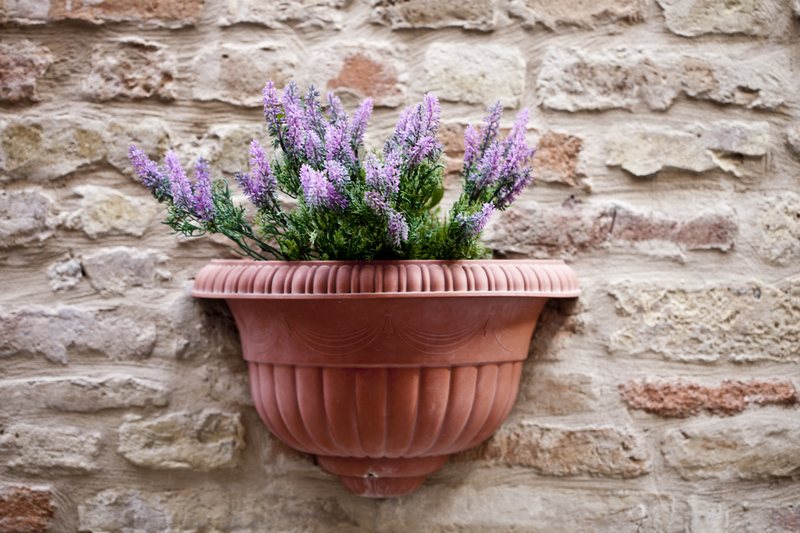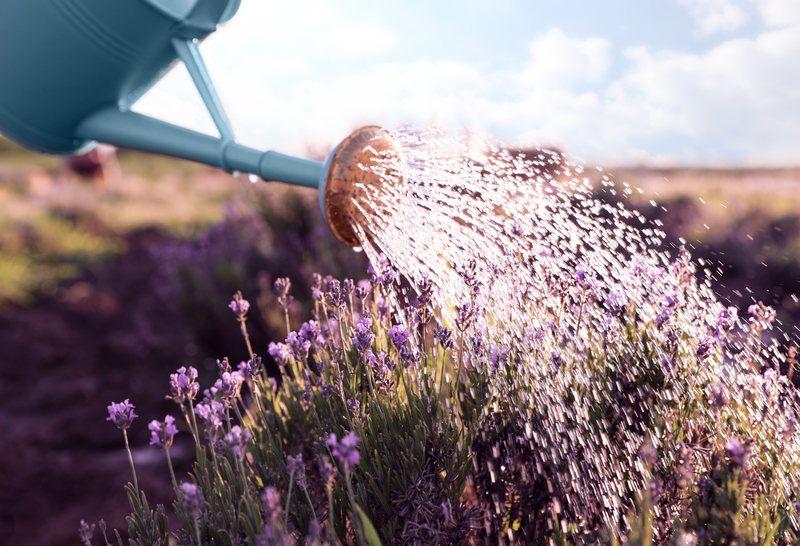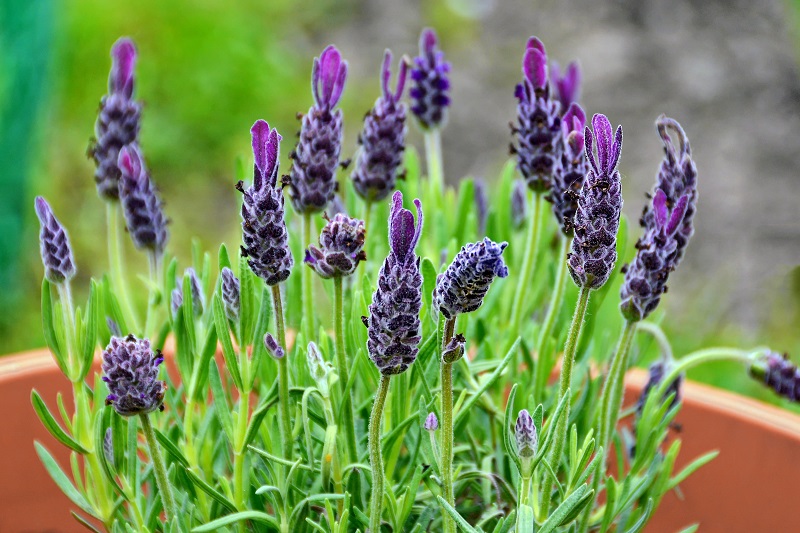Lavender plants are a well-known and frequently used plant for many gardeners and homeowners. Their purple flower tips are what separates it from the rest, making for a pretty sight on your bookshelf or garden.
So, what are some common names for these plants? What soil tends to work best for lavender plants? How much sun does this type of plan need to thrive? Is there any temperature or humidity level you should strive to give this plant? What are some common pests and diseases that can hurt this plant?
Here are some tips for taking care of lavender plants to make sure they stay healthy and strong!
Common Names
- Lavender
- Lavandula angustifolia
- English Lavender
- French Lavender
- True Lavender
What Soil Works Best for Lavender Plants?
The soil that works best for lavender plants are ones with a mix of gritty items. Gritty items include soil, sand, gravel, and some pebbles. You want the soil to have a little bit of texture to allow excess water to flow through the soil and give enough space for the roots to move around in the soil. A well-draining potting soil that has some texture will also reduce the risk of root rot, which is a common problem with this plant.
If you plan to grow lavender in mulch, you won’t have to do anything different with the mulch to allow for new growth. Mulch has that texture that allows water to naturally travel to the roots of the plants without becoming cloggy. Plus, the mulch will create good air circulation for the plant, which will boost the growing conditions for the plant in the early spring each year.
Can You Use a Houseplant Fertilizer?
Lavender plants, for the most part, don’t require any fertilizer to grow. However, if you notice that the plants are not growing well, you can add some liquid fertilizer to the soil of the plant. It is best to only add liquid fertilizer to the plant during the growing season, which is during the warmer months.
If you plan to use fertilizer in the winter, consider only using about a quarter as much as you would in the spring. You don’t want to spring new growth for this plant in the winter because it will grow to quickly and may fall over due to the lack of strength to support the wegith.
How Much Sun Does a Lavender Plant Need?
Lavender plants need full sun to grow healthy and strong. Too much shade would cause the plant to die, so you should put it somewhere in your house that has lots of sunlight. Full sun is around eight hours per day, so an area where you have that amount of sunlight is best.
You can, however, use artificial light that can help you grow plant’s indoors without sunlight. Artificial light is mainly using a special LED light known as a grow light to mimic the sun. This LED light will help your plant grow if you don’t have a great place in the house to grow your plant.
What Temperature Works Best for a Lavender Plant?
Lavender plants do best in warm but not hot weather. However, these plants can survive in the cold and cooler climates. One tip to keep the lavender plants from becoming too leggy in the winter is to prune it. Pruning the plant during the cooler months will restrict any drooping over since the plant won’t be growing in cooler climates.
What Humidity Requirements Do Lavender Plants Want?
In general, lavender plants don’t do well in high humidity areas. Instead, these plants should be in an area with mild humidity and dry weather.
How Much Water Does a Lavender Plant Need?
For the most part, lavender varieties are pretty drought tolerant. If you leave the plants outside in your mulch, you can give them a quick spray with the hose or let naturally rainwater them. If you have lavender plants inside your home, consider watering them once a week during the growing season. When watering the plant indoors, let the excess water run out of the bottom of the pot that has drainage holes to reduce root rot.
Most Common Bugs
The most common bugs to attack a lavender plant include spiders, beetles, and spittle bugs. If you notice these bugs are on the plant, consider using a clean cloth to gently wipe down the leaves of the plant to remove the critters.
Is the Lavender Flower Plant Easy to Maintain?
Lavender requires a lot of care for it to survive. Lavender is one of the more difficult plants to maintain, especially if you grow it in the winter and don’t have the correct type of lavender. The exceptions to this rule are English and Spanish Lavender, which grow well in the winter months. You also should not overwater the plant, or else it will stop the growing process.
Another critical point to consider is the type of pot you are using for the plant. Depending on the type of pot, it can either help or hurt you. In the case of lavenders, a pot with holes on the bottom to help get rid of excess water is helpful since you don’t want too much water dampening the soil.
Is Pruning Important to a Lavender Plant?
Pruning is an essential process to having a healthy lavender plant. It prevents the stalks from drying up, which will cause the plant to no longer to produce lavender. When pruning lavender, make sure that you are careful about where you cut.
If you cut in the wrong area, you could prevent the plant from growing. The place you want to cut is two sets of leaves above the woody area of the plant. Also, note that whatever tools you decide to use must be clean while cutting the plant to prevent infections to your plant.
The only type of disease that a lavender plant has is the fungal infection known as botrytis. Botrytis occurs when you overwater the plant. Ensure that the soil is damp and never more than that, or you could run into an overwatering problem.
Different Types of Lavender Plants to Consider Getting
There are various types of lavender that you can choose from when looking for potted lavender. Some common lavenders include English, Mediterranean, French, and Spanish. Other versions include Hardy, Phenomenal Blue, Lavandis, Hidcote Blue, 500 True, and more.
What Hardiness Zone Works Best for Lavender Plants?
The USDA hardiness zones that work best for lavender plants are 5-8. You want to keep the plant in an area that is not too hot or cold, if possible.
Conclusion: Lavender Plant Care
Whether you decide to use it as a pretty flower or as a potpourri, lavenders use is almost endless. However, knowing how to keep your lavender plant healthy and robust with the tips above will set you up for success. Happy plant growing!
Similar Posts
How to Get Rid of Dandelions in Your Yard
Why Houseplants Leaves Turn Yellow?
What are Good House Plants for Low Light?
How to Take Care of a Mint Plant
Should Houseplants Be in Direct Sunlight?
How Often Should Houseplants Be Fertilized?
How to Take Care of a Money Tree Plant
Ways to Take Care of a Jade Plant
How to Get Rid of Buds on Houseplants
Should Houseplants Be Watered from the Top or Bottom?




